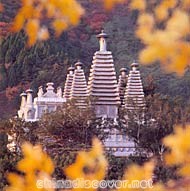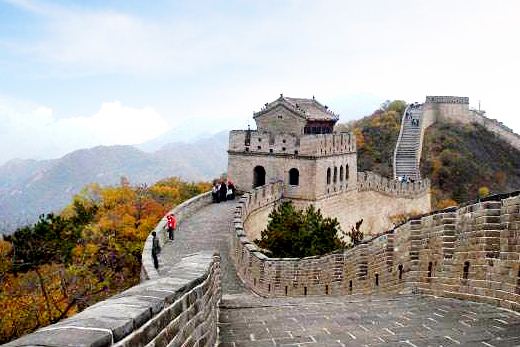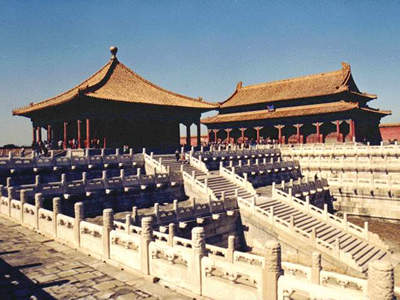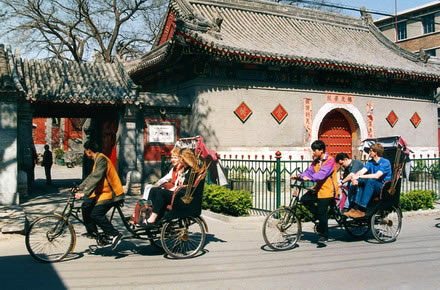 The Temple of the Azure Clouds (Biyun Temple) is situated in the eastern part of the Western Hills. The temple buildings are on the gradually sloping hillside and, from the temple's main gate at the foot of the hill to the highest point, rise almost 100 meters.
The Temple of the Azure Clouds (Biyun Temple) is situated in the eastern part of the Western Hills. The temple buildings are on the gradually sloping hillside and, from the temple's main gate at the foot of the hill to the highest point, rise almost 100 meters.
The temple was first built in the early 14th century and named the Nunnery of the Azure Clouds. It was expanded in the early 16th century and again during the reign of Emperor Qianlong in 1748. At this time, the Hall of the Arhats (Luohantang), modeled after the Jingci Temple in Hangzhou, was built in the southern courtyard and the Diamond Throne Pagoda erected to its rear.
At the time of the founding of the People' s Republic in 1949, the temple buildings were in a state of disrepair. In 1954, the temple was rebuilt and renovated, including the Sun Yat-sen Memorial Hall.
A stone-paved road leads from the front gate of Xiangshan (Fragrant Hills) Park directly to the entrance gate of the temple. A brook runs outside the temple and passes before the gate of the park. On entering the temple, the visitor will pass two huge statues of lions measuring 4.8 meters in height. Inside the first compound are the Bell Tower and Drum Tower, while in the center stands the Devaraja (Heavenly Kings) Hall, which houses a bronze image of Maitreya Buddha cast in the Ming Dynasty. A goldfish pond in this courtyard is surrounded by ancient sal trees, white-bark sandalwood trees and gingko trees. The second courtyard contains the main hall of the temple complex. Inside the hall stand images of Sakyamuni and his disciples. A series of clay figurines standing against the walls make up a diorama of the monk Xuanzang' s passage to India in quest of Buddhist scriptures.
The principal building in the third courtyard is the Hall of Bodhisattvas. The two roofed corridors that once stood here have fallen into decay.
The buildings in the fourth courtyard consist of the Rear Hall and its auxiliary halls, all of which are laid out in an orderly and harmonious manner. This complex now serves as the Sun Yat-sen Memorial Hall. Behind this is a stone memorial archway, which leads to the Diamond Throne Pagoda.
The principal building in the western courtyard is the Hall of the Arhats, designed in the form of a Greek cross. There are altogether 500 gilded wooden images and seven Buddha mages crowded in to the hall. Each of these fine specimens of Qing Dynasty woodcarving has its own individual personalities and expressions.
In addition to these life-sized images, there is also a miniature statue of Jigong in the hall. Nut rather than sitting on a pedestal among his fellows, he is found perching on an overhead beam. The legend tells that having arrived late, he was unable to find a seat among the other immortals.
In the northern part of the compound are the Spring Garden, the Azure Hall of Study and the Eyeglasses Pond. In the Spring Garden on the western side of the temple, underground streams from a mountain spring can be seen gushing out of the crevices in the rocks. Rocks, pavilions, pines and cypresses embellish the spot, making it ideal for relaxation and meditation.


 About Beijing
About Beijing 


